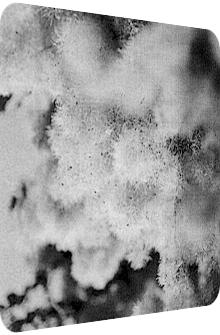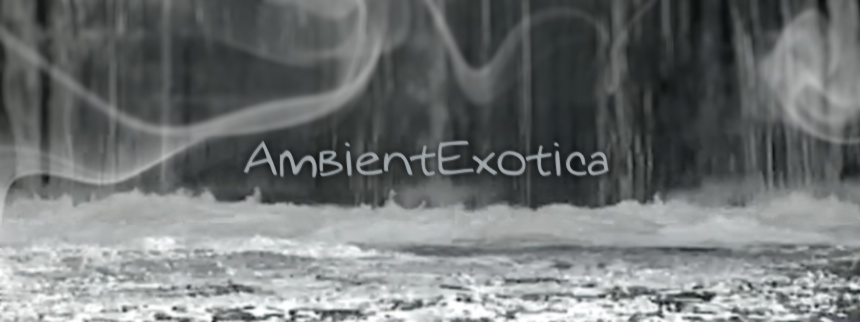
Window Magic
Circular
2013
Circular is a sophisticated tape release by Berlin-based Window Magic aka Andreas Bonkowski, sophisticated in the true sense of the word as the artist takes the listener on an eight-track journey into a bizarro world of psychology, philosophical vestiges, thereminesque Space-Age protuberances and other experiments of the aural kind. Released on Bloody Hands Ltd. situated in Hamburg and Berlin and available to purchase and stream at Bandcamp, experiments the listener shall indeed receive. Let me start with Bonkowski’s severe devotion to the subject of tape recording. Tape labels and releases are surging, a retrogressive fact which is already peculiar enough, but the artist takes his release tactics to the next level, maybe even one step too far to many a listener: he prepares an edition of 33 tapes which are 20–30 years old and have been used heretofore. An aura of mystery is entrapped within the reel. I do not want to imply that this procedure is the work of a genius per se, but in tandem with the album’s aesthetics, Bonkowski virtually opens a new dimension, as the former shadows and monstrosities of the used tape may conflate with the equally multifaceted apparitions of his album. Based on found sounds, field recordings, bent frequencies, swirling molecules and clever alterations, Circular is a work that is hard to reduce to a catchy slogan. Maybe its title already does exactly that. The collages are never presented the way they were originally recorded, the German tape worshipper rather distills the soul and reshapes its former glory. Instruments that could potentially be mouth organs, violins and vibraphones – anything is possible in this realm after all – round off the stratified gallimaufry. Circular asks questions by delivering answers, a twisted approach that is willfully coated in muffled frequency ranges. Here is a look at (the digital version of) a tape supercharged with meanings and ennobled by a specific recording technique.
There is that obvious misconception of Window Magic’s monolithic opener From Here Flows What You Call Time, for it has every histrionic-cinematic element one might think of: polyhedron Dark Ambient-oriented movements, cauterized 50’s stock footage, memorabilia from the same long-lost decade coated in argentine granular haze, and best of all, a shapeshifting maelstrom of protrusions, riverbeds and beguiling rhizomes in-between. Running for almost 22 minutes, this piece multiplexes multitudinous aerose ingredients that are otherwise spread over the album’s intrinsic troposphere amid much shorter gems. But what does that mean in the given context? After the introduction of a spectrally emaciated countdown, -up and -sideway that is more akin to a faux-Fibonacci service announcement than your archetypical NASA sybaritism, the first vibraphone-like glints pierce through the mephitic mirage, resembling saltatory and actually pristine sine scintillae that break with the dun-colored forsakenness, adding a prolonged moment of bliss and rapture to the spineless scenery. Stenographic bubbles, aqueous blebs and other cavernous flurries augment the plasticity, emanate luminescent brightness and seem like absorbing adjuvants that soak in most of the grey melancholy before transmuting it into purified airflows. It is remarkable how big a crevasse the scything modification leaves behind. What was once drowned in sorrow, eeriness and rubicund threnody is now mercilessly ameliorated with glistening artifacts. Further strengthening this notion, Andreas Bonkowski interweaves vibrant sinews during the apex of the composition. Antediluvian and moss-covered, this kosmische kraft now becomes the elasticized legato placenta right in the center of the eupeptic fusillades. Notwithstanding the increasingly metallic-brazen splinters and twirling galactosamines as the Ambient behemoth winds down, From Here Flows What You Call Time is, at the end of the day, a quasi-parable and needs to softly insinuate the circular movement in order to make the allegorical implication of the album title possible. Here the concept of time works for Window Magic.
As for the remaining seven tracks, one should be ever-cautious of elbowing them away by calling them sketches, concepts or appendices, but it is equally clear that the progressive devolution of the opener is confronted here with a loss of time, a corset much narrower than heretofore. Bonkowski’s experienced tape mechanism and reel alterations are still shimmering through more than prominently though. The three-minute capsule In The Shape Of Air intertwines a motif of Medieval violin blotches in adjacency to a reverberated bokeh of blurred orchestra string washes and aurally paints it in a color I would call maudlin mauve (patent pending), whereas Past Life Therapy does not even crack the two-minute mark, but still leaves a lasting impression due to its incisive stylophone-bagpipe synergy, chopped up therapy sessions and the admonitory foreboding of a human’s extirpation. Dimmer then is allotted more time to diffuse its tramontane nebulae, comprising of turbulent ligneous-industrial scrapes that feel like wind gusts being spawned out of a stokehold, stumbling and flouncing through an actually wondrously veneered morning haze of sine tone prayers and 8-bit epitheliums. Whereas Flowchart Echo is a short mocking echopraxia of laundry detergent advertisements showcasing the dynamics in the medial floors of an office block of one’s choice, Hummingbird embraces the translucency of a field recording like anything else on this album as Window Magic dives deeper into a copse’s underbrush of sylvan tendrils awash with birdcalls, cracking branches and reversely played weather-beaten helixes which sport a coarse-grained grittiness. The penultimate Centre Disconnect offers another non-formulaic segue to enjoy, gaining its allure qua its beat-driven state, an iridescent Rock organ in the far distance as well as the even-keeled procession of sound, sustain and silence, making the parallax layers of spoken words, hushing winds and bouncy globs a polylayered ignis fatuus. The closer Sleeping Earth offers one last bucolic fragment (or figment?) of rusticity, shown via the concurrency of clanging trains, harmonica-oid tone sequences, coruscating patchworks of Hauntology vestibules and an overall eldritch rurality that worships the mystery-laden atmosphere of remote hamlets as the sun goes down.
Some time ago, I noted that albums containing just one word in or as their title are often analyzed more meticulously. The power of one informative word can become a self-imposed burden or a stellar choice to mark and emit the artist’s or band’s driving factor, the force that made them create the album. Circular is not meant to be interpreted in such a pithy way, but then again, circles and repetitive movements do appear time and again, and don’t get me started on the concept of nostalgia and leitmotifs whose essence is actually drowning in circular patterns! Speaking of leitmotifs: Window Magic’s overarching rule is based on fugacity and the ophidian – or, again, more fittingly: circular – serpentines enmeshing memories, factoids, field recordings and documentations. Sometimes strikingly similar to Jan Jelinek’s post-millennial throughput à la Tierbeobachtungen (2006) or the Exotica-beguiling More Circulations (2012), Andreas Bonkowski’s omnium gatherum is torn by the forces it successfully encapsulates in tale form. His recording technique is in fact so dedicated and devoted that it towers way above the head of the listener, no offense intended, no ostracism implied. As is always the case with albums where a sophisticated technique matches the aesthetic channels, it is unfortunately left to the artist to truly know how much effort it took to produce these turbulent amalgamations of fused fundaments and acroamatic arcana. The listener receives and perceives the finished product “as is,” and so the compositions have to work and enchant. While enchantment is not the right word, Window Magic bejinxes the bystanding subject with shapeshifting movements, aimless side quests and weird paths through a thicket of eclecticism. I would have wished for a clearer message, not necessarily in the shape of a story teller, but a pinpointed conglomerate of less labyrinthine passageways and fewer alatoric connections. My wish, however, must not come true, for if this were the case, Circular would lose its mnemonic appeal. The following procedure therefore causes the ultimately inevitable downfall: ordering memories, patterns and surfaces, straightening them out and letting them appear silky. This, however, is decidedly not the task, let alone the endeavor of Window Magic’s tape experiments. And so the tohubohu, believe it or not, offers solace in the shapeless form of nescience.
Further listening and reading:
- You can purchase and stream Circular at Bandcamp.
- Window Magic and Bloody Hands Ltd. are on Twitter: @Window_Magic & @bloodyhandsltd.
Ambient Review 317: Window Magic – Circular (2013). Originally published on Feb. 19, 2014 at AmbientExotica.com.
